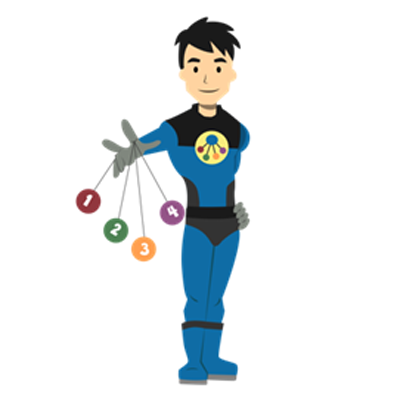There is no one correct way to debate. There are core skills that go into developing a compelling and persuasive debate posture. However, the combination of these features is unique to each individual. We do not attempt to mold debaters into one style, to tell students how to give a speech, and exactly how to structure their speech. Instead, we provide students the tools that enable them to develop a style and approach that is unique to them. We believe all students have the capacity to debate.
We teach core debate skills in a fun and accessible way with the use of specially designed “Debate Superheroes” and engaging cartoons. Our “Debate Superheroes” take students through each step of their learning journey in becoming debate masters!

The core skills that make up the foundation of debate are:

1) Framing: Asking of the right questions; Defining the controversy; Identifying the parameters of debate. Framing is simply about asking the right question and focusing intellectual energy on the right issue. What is the debate about? Why should the debate be about one question rather than another? In answering these questions, students must be able to contextualize a controversy and understand where the stakes are the highest.
2) Construction/Argument: Developing coherent arguments; Establishing the truth of claims; Supporting claims with sufficient reasoning and examples. With the appropriate frame in place, the next step is to build a coherent idea, argument, or case. The skill of presenting an argument, making a case on a particular topic, is essential in all academic, personal, and professional endeavors. Students learn to coherently present an idea and support that idea with reasoning, evidence, and examples.


3) Deconstruction/Rebuttal: Engaging with the arguments of others; Identifying flaws and assumptions in the expressed ideas of others. Debate is an attempt to persuade against competing persuasive efforts. Doing this requires students to possess the ability to deconstruct the arguments of others. In debate, we refer to this as rebuttal or refutation. Refutation is an essential skill in writing, as well as all public and private speaking. Students must learn to critically listen to and engage with the ideas of others, identifying assumptions and flaws in the utterances of others.
4) Comparison: identifying the relative importance of competing knowledge claims; Prioritizing ideas according to their relative importance. Few ideas are absolutely right or wrong. There is usually always some degree of truth on each side of dialogue and debate. Comparison is the practice of identifying those ideas that stand out as true, recognizing their relative importance, and making a case for a prioritization. Decisions are made in every aspect of the debate process, and these decisions require careful comparison with the opposing side.


5) Organization & Structure: Placing ideas in a logical, coherent, and signposted organizational structure. Debate challenges young learners to place their ideas in a cohesive and consistent structure. Because debate is a public speaking activity, it is essential to deliver content that is easy to follow for a listening audience. Enumerating ideas, signposting speech segments, having clear speech segments is necessary for effective communication.
6) Style & Delivery: Giving ideas persuasive life through oral expression; Utilizing the full power of voice and body in communicating ideas. In public speaking and debating, our content – what we say – is often impacted by our style – how we say it. Each learner needs to connect with their speaking style to be the most effective communicator they can be. Debaters must also utilize memorable and vivid rhetoric. They must adjust the tone and volume of their voices to the appropriate persuasive needs of their speech. They must also be appropriately animated with their bodies to deliver a compelling message.
